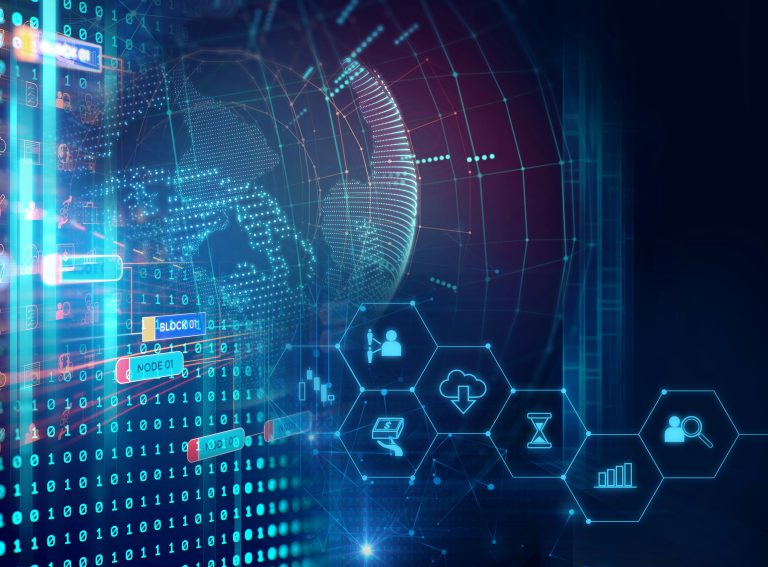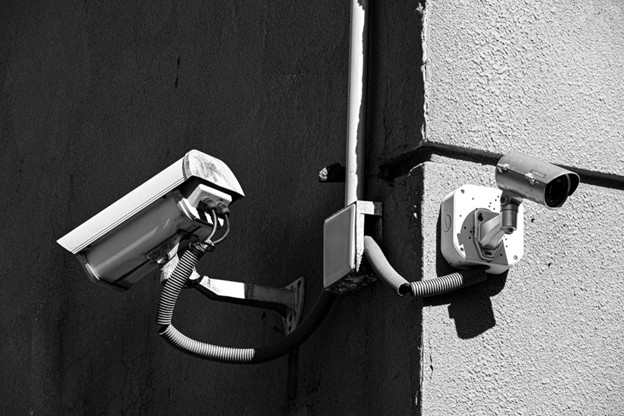
The synergy between Artificial Intelligence (AI) and Cybersecurity stands at the forefront of innovation and security. As organizations increasingly leverage AI to enhance efficiency and decision-making processes, the need for robust cybersecurity measures has become paramount. Artificial Intelligence, with its capacity for learning and adapting, has revolutionized various industries, from healthcare to finance. In the realm of cybersecurity, AI plays a pivotal role in fortifying defenses against sophisticated cyber threats.
Machine Learning algorithms, a subset of AI, enable systems to autonomously identify patterns, analyze data, and predict potential security risks. This proactive approach significantly enhances the efficiency of threat detection and response mechanisms. This dynamic landscape is not without its challenges. The risk of adversarial attacks looms as AI becomes more integral to cybersecurity strategies.
Adversaries exploit vulnerabilities in AI systems, manipulating them to provide false outputs or bypass security protocols. Addressing these challenges requires a comprehensive understanding of the delicate balance between innovation and security. Mechanical engineer, Hazim Gaber has built his career creating security oversight systems for key players in healthcare, retail, and hospitality. He provides informed insights on the intersection of AI and cybersecurity in today’s online space.
Securing AI Systems in the Current Technological Era
In the current technological era, where data is hailed as the new currency, securing AI systems is not merely a choice but an imperative. AI processes vast amounts of sensitive information, ranging from personal details to critical business insights. A breach in an AI system not only compromises data integrity but also poses a substantial risk to privacy and confidentiality. As organizations continue to invest in AI-driven solutions, safeguarding these systems is crucial to maintaining trust and ensuring the responsible use of technology.
“The increasing interconnectivity of devices and the proliferation of the Internet of Things (IoT) further amplify the need for robust cybersecurity,” says Hazim Gaber. “AI-powered devices and systems are often integral components of the IoT ecosystem, creating an intricate web of potential vulnerabilities.”
Securing AI systems is not only about protecting data but also safeguarding the functionality of interconnected devices that contribute to the seamless functioning of our digital infrastructure.
Artificial Intelligence continues to emerge as a formidable ally in fortifying digital defenses. It plays a multifaceted role in strengthening cyber defenses and comes with a number of challenges and risks inherent in its integration.
The Role of AI in Strengthening Cyber Defenses
At the forefront of AI’s contribution to cybersecurity is the application of Machine Learning (ML) algorithms for threat detection. These algorithms, capable of analyzing vast datasets at unprecedented speeds, empower security systems to identify patterns indicative of potential cyber threats. ML-driven threat detection not only automates the process but also adapts and evolves with the changing nature of cyber threats. This proactive approach significantly enhances the efficiency and responsiveness of cybersecurity measures, providing a crucial advantage in the ongoing battle against cyber adversaries.
In addition to threat detection, AI leverages predictive analytics to identify vulnerabilities before they can be exploited. By analyzing historical data and discerning emerging patterns, predictive analytics enable cybersecurity professionals to preemptively address weaknesses in systems. This anticipatory approach is instrumental in mitigating potential risks, allowing organizations to stay one step ahead of cyber threats. The integration of predictive analytics into cybersecurity strategies represents a paradigm shift from reactive to proactive defense mechanisms.
Challenges and Risks of AI Integration in Cybersecurity
As AI assumes a central role in cybersecurity, it becomes a prime target for adversarial attacks. Malicious actors are adept at exploiting vulnerabilities in AI systems, introducing deceptive data, or manipulating algorithms to subvert security measures. The cat-and-mouse game between defenders and attackers escalates as adversaries continuously evolve tactics to outsmart AI-driven security systems. Understanding and mitigating the risks of adversarial attacks are critical for ensuring the reliability and efficacy of AI-integrated cybersecurity frameworks.
“The autonomy endowed to AI in cybersecurity introduces ethical considerations that demand careful examination,” says Hazim Gaber. The deployment of autonomous cybersecurity measures raises questions about accountability, transparency, and unintended consequences. Balancing the need for swift and accurate responses to cyber threats with ethical considerations is a delicate task.
Addressing these ethical implications requires a collaborative effort involving cybersecurity experts, policymakers, and ethicists to establish frameworks that align technological advancements with ethical standards. In navigating the intricate interplay between AI and cybersecurity, acknowledging the potential challenges and risks is imperative. The advancements in AI-driven threat detection and predictive analytics are substantial, but a nuanced understanding of adversarial threats and ethical dimensions is essential for cultivating a resilient cybersecurity ecosystem.

Cybersecurity for AI Systems
As the integration of Artificial Intelligence (AI) continues to expand across sectors, a focused approach to cybersecurity for AI systems is imperative. It’s important to understand the unique security concerns associated with AI implementation, alongside best practices essential for fortifying the underlying infrastructure.
A pivotal concern in AI implementation is the safeguarding of sensitive data during the training phase. Machine Learning models learn from vast datasets, often comprising sensitive information. Ensuring the privacy and integrity of this data is paramount. Encryption techniques, such as homomorphic encryption, enable the protection of data even during the training process.
“Striking a balance between the need for comprehensive training datasets and the imperative to protect sensitive information requires meticulous planning and robust encryption protocols,” says Gaber.
AI systems are not immune to exploitation and manipulation attempts. Adversaries may seek to exploit vulnerabilities in AI models or manipulate input data to deceive the system. Developing AI models with adversarial robustness and implementing techniques like adversarial training becomes crucial. Additionally, thorough validation of input data integrity is essential to prevent manipulative inputs from compromising the efficacy of AI algorithms. The dynamic nature of cyber threats necessitates continuous updates and adaptive strategies to counter evolving exploits.
Best Practices for Securing AI Infrastructure
Securing the infrastructure supporting AI systems involves a multifaceted approach, with encryption and access control at its core. Encryption ensures that data remains confidential, even if unauthorized access occurs. Implementing robust access control mechanisms restricts system access to authorized personnel, mitigating the risk of unauthorized manipulation. The integration of these practices into AI environments is pivotal for maintaining the integrity and security of AI systems, especially in environments where sensitive data is processed.
In the dynamic landscape of cybersecurity, continuous monitoring is indispensable for detecting anomalies that may indicate potential security breaches. Implementing sophisticated anomaly detection algorithms powered by AI enhances the capacity to identify deviations from normal system behavior. Real-time monitoring facilitates swift responses to emerging threats, preventing potential damages. The synergy between AI and continuous monitoring creates a proactive defense mechanism that is essential for staying ahead of the ever-evolving cyber threat landscape.
Addressing these unique security concerns and implementing best practices is pivotal in establishing a resilient cybersecurity framework for AI systems. The intersection of AI and cybersecurity requires a meticulous and adaptive approach to strike a balance between innovation and security. In the subsequent section, we will explore the future trends and innovations shaping the landscape of AI and cybersecurity integration.

Future Trends and Innovations
Staying ahead of emerging threats requires a keen eye on future trends and innovations. Exploring the evolving landscape emphasizes how Artificial Intelligence (AI) is adapting to counteract emerging cyber threats and the collaborative synergy between AI and human expertise.
The trajectory of AI in cybersecurity is increasingly defined by its role in threat intelligence and information sharing. AI’s capacity to swiftly analyze vast datasets has become a linchpin in identifying and understanding emerging cyber threats. Collaborative platforms leveraging AI facilitate real-time information sharing among organizations, fostering a collective defense against the ever-evolving threat landscape. By harnessing AI-driven threat intelligence, the cybersecurity community is poised to respond proactively to emerging threats, enhancing the overall resilience of digital ecosystems.
The marriage of AI and blockchain technology is emerging as a potent solution for enhancing cybersecurity. Blockchain’s decentralized and tamper-resistant nature aligns seamlessly with AI’s capabilities. Integrating blockchain enhances the security of AI algorithms and models by providing an immutable ledger for recording and verifying transactions. This collaboration ensures transparency, mitigating the risk of unauthorized alterations. The symbiotic relationship between AI and blockchain marks a paradigm shift, promising heightened security for critical systems and safeguarding against unauthorized interventions.
Collaboration between AI and Human Expertise in Cybersecurity
The future of cybersecurity lies in the collaborative dance between AI and human expertise, often referred to as augmented intelligence. In incident response, AI is a force multiplier, automating routine tasks and swiftly processing massive datasets. This automation allows human experts to focus on strategic decision-making and address the nuanced aspects of cybersecurity incidents. The fusion of AI’s computational prowess and human intuition creates a dynamic defense mechanism that is not only effective but also adaptive to the complexity of modern cyber threats.
Ethical considerations are taking center stage in the evolution of AI in cybersecurity. A forward-looking approach involves training AI systems with human-centric ethical standards. This imperative aligns AI decision-making processes with human values, ensuring accountability, transparency, and fairness. The collaboration between ethicists, policymakers, and technologists is pivotal in defining and implementing these ethical standards. By embedding ethical considerations into AI systems, we pave the way for responsible AI development that respects human values and societal norms.
In embracing these future trends, the cybersecurity landscape stands to benefit from a convergence of cutting-edge technologies and human ingenuity. The synthesis of AI’s adaptability and human ethical sensibilities promises a resilient defense against the intricacies of emerging cyber threats. As we conclude our exploration, it is evident that the future of AI and cybersecurity integration holds tremendous promise, contingent on a harmonious collaboration between technology and human wisdom.
Anticipating Future Developments in AI and Cybersecurity Integration
Looking forward, the integration of AI and cybersecurity is poised for continual evolution. Future developments may witness the refinement of AI-driven threat intelligence, the maturation of ethical frameworks guiding AI systems, and novel innovations in response to emerging cyber threats. The collaborative efforts between human expertise and AI capabilities are likely to shape a resilient defense mechanism that adapts to the dynamic nature of cyber threats.
As technology advances, the foresight to anticipate and proactively address potential challenges becomes paramount. Ethical considerations, ongoing research, and adaptive strategies will be instrumental in ensuring that the integration of AI into cybersecurity aligns with societal values and secures the digital landscape for generations to come.
The intersection of AI and cybersecurity is not merely a technological endeavor but a collective journey toward a secure and ethically grounded digital future. Through sustained collaboration and a commitment to responsible innovation, we can navigate the evolving landscape with confidence, ensuring that the promise of AI in cybersecurity is realized in a manner that prioritizes security, privacy, and human well-being.






